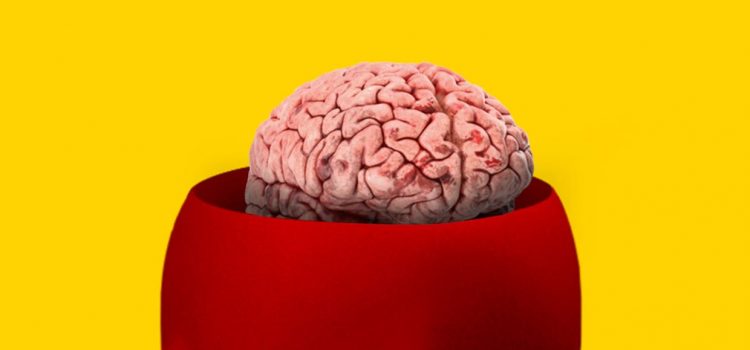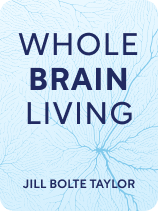

This article is an excerpt from the Shortform book guide to "Whole Brain Living" by Jill Bolte Taylor. Shortform has the world's best summaries and analyses of books you should be reading.
Like this article? Sign up for a free trial here.
What are Jill Bolte Taylor’s 4 characters of the brain? How do these characters work together to keep the brain active and working?
In her book Whole Brain Living, Jill Bolte Taylor cites four “characters” of the brain that have their own way of perceiving and navigating the world. She also introduces where each character resides and what they’re like.
Continue reading to learn more about these four characters and their roles in the brain.
The Four Characters Within Our Brain
Understanding each of Jill Bolte Taylor’s 4 characters is the first step to being able to intentionally call on each one to take control of different situations. She says that everyone has one character associated with the left-side cerebral cortex (Character 1), left-side limbic system (Character 2), right-side limbic system (Character 3), and right-side cerebral cortex (Character 4).
Each character has its own strengths and weaknesses depending on the context. Taylor emphasizes that although we may currently have one dominant character, our dominant characters are dynamic depending on the circumstances, and we also have the power to change which character dominates. The character descriptions that follow are meant to help you get to know the diverse and contradictory desires within each of us.
(Shortform note: Taylor’s concept of getting to know your four characters boils down to the practice of increasing your self-awareness: recognizing how you’re reacting physically, emotionally, and psychologically in a given moment. While Taylor uses the personality profiles of the four characters as a tool for choosing which character you want to embody, there are many ways to increase your self-awareness and change your behavioral patterns. For example, in Emotional Intelligence 2.0, Travis Bradberry and Jean Greaves recommend strategies such as journaling, reflecting on the ripple effect of your actions, and engaging with art and media as ways to explore your emotions.)Taylor explores how the characters tend to take care of your body, how they act in the workplace, and how they relate to others in romance. (Shortform note: We’ll also supplement the descriptions with our interpretations of why each character exhibits those behaviors based on Taylor’s descriptions of the different areas of the brain.)
Character 1: Left-Side Cerebral Cortex—Structured Thinking
According to Taylor, Character 1 values practicality the most and is highly attuned to your ego—your sense of being an individual. Character 1 focuses on differences (between physical objects and people) and excels at defining boundaries and establishing routines. This character uses their rational and ordered thinking to analyze, organize, and formulate plans. On the other hand, Taylor says that Character 1’s structured thinking can be too rigid, and it’s also the part of us that judges ourselves and others harshly, makes unhealthy comparisons between people, and is only satisfied by external forms of affirmation such as wealth and social status.
Here’s how Taylor describes Character 1 in different contexts:
Taking care of your body: Character 1 tends to treat the body like a valuable tool needed to get things done. Because of this, Character 1 optimizes the body’s health through regular check-ups, pays close attention to detail when it comes to diet and exercise, and tends to manage illness by learning as much as possible about it and taking appropriate action.
Workplace: Character 1 tends to take on a leadership role in the workplace in one of two ways—what Taylor refers to as a “Hard 1” or a “Soft 1.” Hard 1s are so determined to get things done efficiently that they can be overly critical of their colleagues and themselves. They like to do things their own way and aren’t receptive to feedback. On the other hand, Soft 1s are supportive and good at organizing their team members, set clear expectations, and strive for improvement.
Romance: Taylor claims that in relationships, Character 1 is very concerned with establishing labels (for example, “Are we in a committed relationship or dating casually?”) and the timeline for relationship milestones such as marriage, as well as maintaining a predictable dynamic between partners.
Character 2: Left-Side Limbic System—Protective Emotions
The next character Taylor describes is Character 2. Since Character 2 lives in the limbic system, they process rapid emotional responses, and since Character 2 lives in the left hemisphere that categorizes and stores memories, they determine whether you’re safe or not depending on your past experiences. For example, if you had a close friend in the past who abruptly abandoned your friendship, Character 2 might protect you from harm by drawing connections between that previous experience and similar behaviors observed in others in the present. In other words, Character 2 is good at learning from the past. However, they can also be overprotective and therefore draw you into negative thought cycles about things that could happen.
Here’s how Taylor describes Character 2 in different contexts:
Taking care of your body: Character 2 is pessimistic when it comes to health and often dwells on small aches and pains. They also tend to worry about what could go wrong with their body in the future. However, whether something is actually wrong with their health or not, Character 2’s fear prevents them from taking any action to improve or cope with their health status.
Workplace: Taylor says that Character 2 struggles to establish trusting relationships with their co-workers because they’re trying to avoid any kind of vulnerability. They’re also driven by fear and anxiety, causing them to exhibit a forceful and unfriendly leadership style.
Romance: Character 2 often seeks comfort with other Character 2s in relationships because they can commiserate together and share a victim mentality when it comes to everyone else. According to Taylor, Character 2 may also gravitate toward a Character 1 who is happy to be in control and help take care of the Character 2. Taylor also warns that whenever our Character 2 relies on other people for their happiness, it leads to an unhealthy codependent relationship.
Character 3: Right-Side Limbic System—Experiential Emotions
Unlike Character 2, who assesses your safety based on past experience, Character 3 exhibits emotions that are wholly rooted in the present moment. Taylor says that although Character 3 initiates a fight or flight response when threatened, it’s also the character who feels uninhibited joy and loves to soak up every moment of living. Because Character 3 resides in the right hemisphere, they also enjoy creative activities to the point where they’re unaware of time passing—a state referred to as “flow.”
The flip side of Character 3’s playfulness and go-with-the-flow mentality is that they’re unpredictable and don’t necessarily respect authority figures or rules.
Here’s how Taylor describes Character 3 in different settings:
Taking care of your body: Character 3 has a high level of body awareness, but unlike Character 1’s more practical concerns with their body’s state, Character 3 seeks to make the body feel good. Taylor writes that they’re naturally curious and therefore like to push their body’s boundaries (by trying new activities or training for a race, for instance). When faced with illness, Character 3 is likely to find creative solutions to maintain an enjoyable lifestyle. For example, if an active Character 3 suddenly required a wheelchair, Character 3 would still find fun wheelchair-accessible sports to participate in.
Workplace: Taylor says that Character 3 enjoys collaborating with other people and finds joy in their day-to-day work activities. One of their strengths is being able to switch between different projects easily, but they’re not great with deadlines and budgets.
Romance: According to Taylor, Character 3 likes to mix things up when it comes to romance. They love the rush of new experiences and connecting with a variety of people, and they aren’t keen on making long-term commitments. Their unpredictability may be fun for their partners initially but will eventually be off-putting to Character 1s or Character 2s.
Character 4: Right-Side Cerebral Cortex—Expansive Thinking
Taylor explains that Character 4 exhibits an expansive and fluid style of thinking that’s focused on the present moment. She says that one way of understanding Character 4 is by imagining our mindset when we first entered the world: We didn’t have language, memories, or a sense of self. We also entered the world aware that we’re made up of the same energy that flows through everything else in the universe—a cosmic consciousness that transcends words, rationalization, or scientific understanding. Unlike Character 1, who thinks in terms of language and focuses on boundaries, Character 4 thinks in pictures and recognizes that everything’s connected.
Taylor strengthened her connection to Character 4 after her stroke, and while she acknowledges that there’s no easy way to access Character 4, she recommends focusing intently on the experience of the current moment and then channeling all of your mental energy into gratitude.
Taking care of your body: Character 4 considers the body sacred. Taylor says that because of this, Character 4 embraces holistic care (including eating well, doing physical activity, and engaging in spiritual practices). She says that Character 4 holds fast to gratitude even during periods of illness.
Workplace: At work, Character 4 excels at visualizing how multiple moving parts fit into the big picture. For example, they might do a great job of putting together a team with complementary skills and coordinating different departments as they work toward a larger goal. Taylor explains that they don’t get bogged down by details or setbacks, and they’re motivated to make the world a better place rather than accumulate material goods.
Romance: Taylor says that in romantic partnerships, Character 4 is the sense of groundedness that comes from within rather than from the other person. Because they naturally focus on the positive in life, Character 4 is great at connecting with others. Taylor also clarifies that although Character 4 is an optimist at heart, they’ll only stay in a relationship long term if the other person is truly present with them and brings positive energy to the dynamic.

———End of Preview———
Like what you just read? Read the rest of the world's best book summary and analysis of Jill Bolte Taylor's "Whole Brain Living" at Shortform.
Here's what you'll find in our full Whole Brain Living summary:
- How you can choose to access different parts of your brain
- The four areas of the brain that perceive and navigate the world differently
- How to achieve emotional well-being by getting to know our brains better






